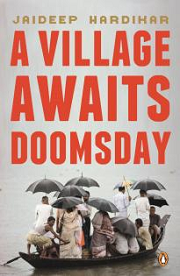/topics/government-programmes
Government Programmes
Reviving dying springs in Sikkim
Posted on 28 Mar, 2013 11:48 AMPure and beautiful, mountain springs confer lives. With change in climate conditions and rainfall patterns, rural habitations in Sikkim face drinking water shortages. Many of these springs are drying up or their discharge declining. But there is hope at the end of an endeavour, where science, government and community come together to revive springs of their local region.

Residents of Khandwa in Madhya Pradesh, resist public private partnership in their water supply project- A press release by Manthan Adhyayan Kendra
Posted on 20 Mar, 2013 09:58 AMThe bad track record of the public sector to provide water has increasingly led to private sector participation in water supply system. The proponents of privatization state that private sector would increase efficiency, bring adequate finance and help build the infrastructure that is required to run the utilities properly in an effective manner.

Accelerated Irrigation Benefits Programme given near-exclusive priority in 12th five year plan, but will it solve India’s water problems?
Posted on 16 Mar, 2013 09:04 PMThere is a palpable sense of a looming water crisis in India. Conflicts across competing users and uses are on the rise. In the irrigation sector, it is widely felt that “paucity of resources and poor performance of existing major and medium irrigation systems are the two main problems”(1).

Conference report: The Anil Agarwal Dialogue on "Excreta does matter", organised by Centre for Science and Environment on 4-5 March 2013 at New Delhi
Posted on 12 Mar, 2013 03:23 PMA close examination of these two issues shows that the water and sewage challenge is already grave and could get worse. With this as the backdrop, Centre for Science and Environment (CSE), a public interest research and advocacy organisation based in New Delhi, organised a two day conference called the Anil Agarwal Dialogue on “Excreta does matter”. The conference took place at the Jacaranda Hall, India Habitat Centre, Lodhi Road, New Delhi on 4 and 5 March 2013.
The dialogue aimed at furthering the agenda of CSE’s seventh State of India’s Environment report titled Excreta Matters. This report is a comprehensive survey of the situation of water and wastewater management in 71 Indian cities. The study found that most cities lack a basic policy direction on how best to tackle issues of demand, supply and treatment of water, and of management of sewage.
The Dialogue being the first of its kind brought together a wide range of professionals, activists, practitioners, policy makers, academicians, researchers and administrators from the water sector. The event was aimed at drawing attention on the critical issues of how cities will get affordable and sustainable water and waste systems that can supply to all and take back and treat the sewage of all.

How have India's flagship development programmes fared ? - Budget briefs on the TSC, JNNURM and MGNREGS by the Accountability Initiative
Posted on 12 Mar, 2013 11:40 AMGovernment of India’s development programmes are aimed to bring in much required inclusive development and pave a way towards an equitable and socially just society. With this motive the Centre had introduced several programmes in social sectors and allocated a fixed amount for achieving the set goals.
An analysis on the performance of the programmes shows how far the targets have been achieved, the shortcomings and the steps that are to be taken to strengthen the programmes.

Review of the Draft Rajasthan Lake Authority Bill 2013
Posted on 27 Feb, 2013 01:12 PMThe draft Bill can be requested from the Ministry of Urban Development and Housing, Government of Rajasthan. The draft Bill through discussion at the state assembly may be amended into an ‘Act’. Following is broad review of the draft Bill. For detail review by the author, you may ask the author at: mansee@edc.org.in.
An assessment of the impact of MGNREGA on rural water security : Talks from the IWMI-Tata Annual Partners' Meet held at Anand in November 2012
Posted on 26 Feb, 2013 04:04 PMA month ago, India Water Portal tried to make sense of the numbers involved in India's flagship programme. Two-thirds of the works in progress in the current financial year (2012-13) were devoted to works linked with water - split nearly equally between water for domestic use and water for livelihoods.
Even as Maharashtra faces acute water scarcity, a green, lush village in the heart of Marathawada stands water rich and drought proof- Roundup of the week’s news (February 18-24, 2013)
Posted on 25 Feb, 2013 04:00 PMA green oasis amidst despair and drought hit Maharastra
Subsidy or shame: Which technique works better in improving sanitation in India ? - Talk by Sumeet Patil, NEERMAN, at the 3ie seminar at Delhi, February 2013
Posted on 25 Feb, 2013 09:48 AMSubsidy proponents believe that the poor need economic incentives while shaming proponents contend that to bring out lasting behavioural change, intrinsic motivation is required; people are more likely to use and value things they have had to pay for.






